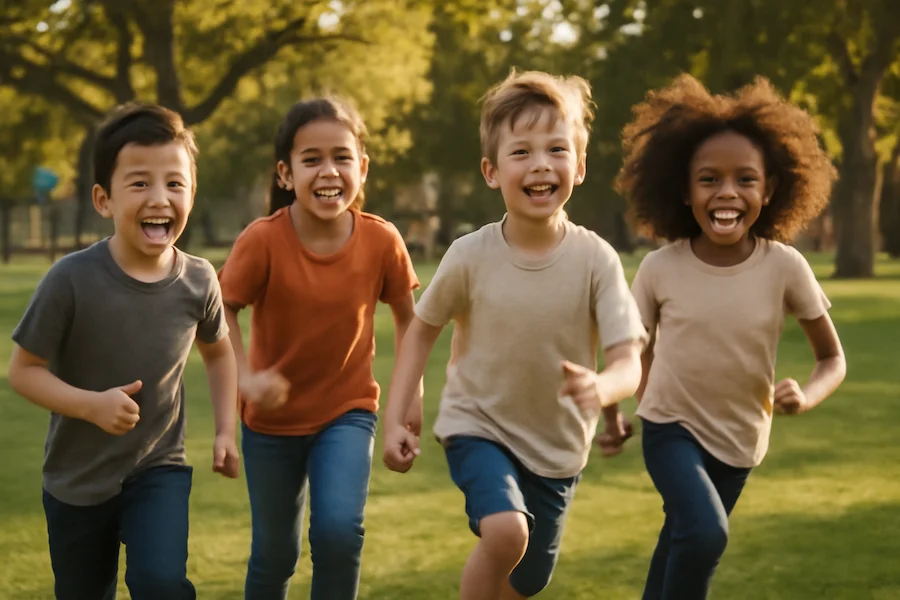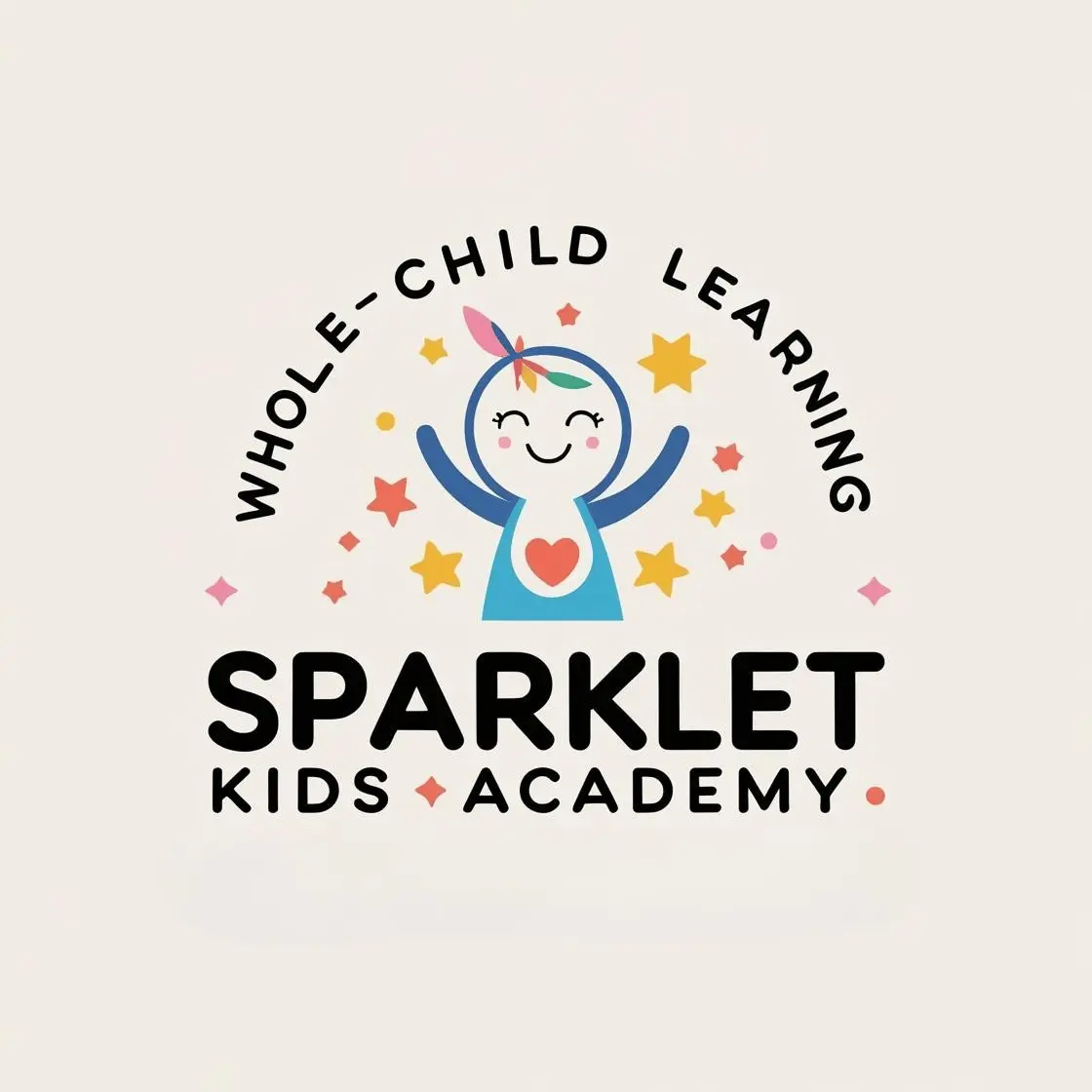
Your three-year-old comes home from preschool singing a song in Mandarin, showing you how to bow respectfully like her Japanese classmate, and asking why Arjun’s family doesn’t eat beef.
Welcome to the Silicon Valley advantage.
While other communities struggle to expose children to diversity, Santa Clara families have something extraordinary: a naturally multicultural environment that mirrors the global workplace your child will eventually enter. This diversity is a key factor when parents are choosing a preschool near them.
But here’s what most parents miss—diversity alone isn’t enough. Your child needs explicit multicultural education that transforms cultural differences from curiosity into competence. The preschool years are your golden window to build this foundation.
After working with hundreds of Silicon Valley families from dozens of cultural backgrounds, experts have identified the exact skills and experiences that prepare children not just to tolerate diversity, but to thrive in our interconnected world.
The Silicon Valley Reality: Why Multicultural Skills Matter More Here
Your Child’s Future Colleagues Will Be:
- 40% Asian or Pacific Islander
- 25% Latino or Hispanic
- 20% White
- 10% Black or African American
- 5% Other ethnicities
Your Child’s Future Success Depends On:
- Communicating across cultural communication styles
- Understanding different problem-solving approaches
- Navigating varied social customs and expectations
- Building trust with people from diverse backgrounds
The Early Education Advantage:
Children who learn multicultural competence before age 5 develop neural pathways that make cross-cultural communication feel natural rather than forced. They don’t just “tolerate” diversity—they leverage it, a skill that gives them a head start for the top Santa Clara elementary schools.
The Hidden Curriculum: What Children Learn Without Teaching
In Monocultural Environments, Children Absorb:
- “Our way is the normal way”
- Differences are problems to solve
- Unfamiliar customs are “weird” or “wrong”
- Communication happens only one way
In Multicultural Environments, Children Discover:
- “There are many normal ways”
- Differences create interesting opportunities
- Unfamiliar customs have meaningful purposes
- Communication adapts to the audience
The Critical Insight: Your child doesn’t need to leave Santa Clara to gain global competence—they need to experience their Santa Clara community intentionally.

The Four Pillars of Multicultural Competence
Pillar 1: Cultural Curiosity (Not Cultural Judgment)
What It Looks Like:
Your child asks “Why do they do that?” with genuine interest rather than “That’s weird.”
The Home Building Plan:
Implement The Family Explorer Practice. Each month, choose one culture represented in your child’s class or neighborhood. Research together:
- How do families celebrate special occasions?
- What foods are important and why?
- What languages do they speak at home?
- What values do they emphasize with children?
The Santa Clara Advantage: Interview actual families rather than reading books. Ask Mrs. Chen to teach your child to use chopsticks. Invite the Ramirez family to show you their Día de los Muertos traditions. Ask Dr. Patel about Diwali celebrations.
Real neighbors sharing real traditions beats Google searches every time.
Pillar 2: Communication Code-Switching
What It Looks Like:
Your child adjusts their communication style based on who they’re talking to—speaking more softly with families from cultures that value quiet reflection, or being more expressive with families that encourage animated conversation.
The Home Building Plan:
Practice The Communication Chameleon Game. Role-play different interaction styles:
- “Let’s practice talking to Grandma (formal respect style)”
- “Now let’s practice talking to your friend Sam (casual peer style)”
- “How would you ask Ms. Rodriguez for help? (polite request style)”
The Key Learning: There’s no single “right” way to communicate—effectiveness depends on understanding your audience.
Pillar 3: Cultural Bridge-Building
What It Looks Like:
Your child helps classmates understand each other across cultural differences, becoming a natural translator and connector.
The Home Building Plan:
Create The Cultural Connection Project. When your child mentions confusion or conflict with classmates from different backgrounds, help them investigate:
- “What might they be thinking or feeling?”
- “How does their family do things differently?”
- “What could help everyone understand each other better?”
Example: When Aisha won’t play during Ramadan lunch period, your child learns about fasting and suggests quiet activities instead of active games.
Pillar 4: Global Perspective-Taking
What It Looks Like:
Your child naturally considers multiple viewpoints and understands that people’s backgrounds influence their perspectives.
The Home Building Plan:
Use The Many Lens Method. When discussing any situation, ask:
- “How might someone from India see this differently?”
- “What would a family from Mexico think about this?”
- “How might this feel to someone whose first language isn’t English?”
The Goal: Perspective-taking becomes automatic rather than forced.
The Santa Clara Multicultural Education Toolkit
The Neighborhood Cultural Map
Create a visual map of your immediate area showing:
- Countries of origin for families on your street
- Languages spoken in nearby homes
- Cultural celebrations throughout the year
- Community gathering places for different cultures
Use it to: Plan cultural exploration adventures right in your neighborhood.
The Family Tradition Exchange
How it works:
Partner with 3-4 families from different cultural backgrounds. Each month, one family teaches the others about a meaningful tradition.
- January: The Kim family teaches Korean New Year customs
- February: Your family shares Valentine’s Day traditions
- March: The Gonzalez family demonstrates making tamales
- April: The Singh family explains Holi celebrations
The Magic: Children learn that every family has meaningful traditions worth celebrating.
The Global Problem-Solving Circle
When challenges arise at preschool:
Instead of imposing one solution, explore multiple cultural approaches. This can be especially useful for parents trying to achieve work-life balance while supporting their child’s social development.
- How do Japanese families handle sibling conflicts?
- What do Mexican families do when children are reluctant to try new foods?
- How do Indian families encourage respect for elders?
The Learning: Problems have multiple valid solutions depending on cultural context.
Age-Appropriate Multicultural Learning
Ages 2-3: Foundation Building
Focus: Basic cultural awareness and appreciation
Monthly Activities:
- Explore one new cultural food together
- Learn “hello” and “thank you” in different languages
- Listen to music from various cultures
- Read picture books featuring diverse families, which is a great activity if you’re also managing daycare for a newborn.
Key Messages:
- “Families do things in different ways”
- “Different foods can be delicious”
- “People speak many beautiful languages”
Ages 3-4: Active Exploration
Focus: Understanding cultural practices and their meanings
Monthly Activities:
- Attend community cultural festivals
- Learn traditional games from different cultures
- Practice cultural greetings and customs
- Interview neighbors about their family traditions
Key Messages:
- “Every tradition has a special meaning”
- “We can learn from everyone”
- “Different doesn’t mean wrong”
Ages 4-5: Cultural Competence Building
Focus: Developing practical cross-cultural skills
Monthly Activities:
- Practice code-switching communication styles
- Help resolve cultural misunderstandings with peers
- Plan multicultural celebrations for family gatherings
- Research family heritage and cultural connections
Key Messages:
- “We can communicate with anyone”
- “Understanding others helps solve problems”
- “Our differences make our community stronger”

The Language Learning Advantage
Silicon Valley’s Multilingual Reality:
- 60% of children hear languages other than English at home
- Mandarin, Spanish, Hindi, and Tagalog are common second languages
- Tech companies increasingly value multilingual employees
Your Action Plan:
- Identify the top 3 languages in your child’s preschool
- Learn basic phrases together (hello, please, thank you, goodbye)
- Practice with native speakers in your community
- Celebrate your child’s attempts regardless of pronunciation
The Goal: Comfort with multiple languages, not perfection.
Building Cultural Competence Through Play
The Global Restaurant Game
Transform dramatic play into cultural learning. Each week, your “restaurant” serves food from a different culture. Children practice:
- Appropriate greetings and customs
- Different eating styles (chopsticks, hands, utensils)
- Understanding food preferences and restrictions
- Basic phrases in other languages
The Cultural Detective Challenge
When children encounter unfamiliar customs, they become “cultural detectives”:
- What clues help us understand this tradition?
- What questions could we ask respectfully?
- How might this custom help families or communities?
- What similar traditions does our family have?
The Empathy Bridge Project
Role-play common cultural miscommunications:
- What happens when eye contact expectations differ?
- How do we navigate different gift-giving customs?
- What about varying approaches to personal space?
- How do we handle different celebration styles?
Navigating Cultural Conflicts with Grace
When Cultural Values Clash:
The Santa Clara Example: Your child’s American friend wants to have a sleepover, but their Indian classmate’s family doesn’t allow overnight visits with non-family members.
The Learning Opportunity:
- Acknowledge both perspectives are valid
- Explore the underlying values (independence vs. family protection)
- Find creative solutions (extended evening play dates instead)
- Build understanding rather than judgment
The Life Skill: Conflict resolution that honors different cultural values rather than forcing assimilation.
Your Monthly Multicultural Action Plan
Week 1: Cultural Discovery
- Choose one culture represented in your child’s class
- Research basic information together using age-appropriate resources
- Plan a cultural exploration activity for the month
Week 2: Community Connection
- Connect with a family from this cultural background
- Ask respectful questions about traditions and customs
- Invite them to share something meaningful with your family
Week 3: Hands-On Experience
- Try cooking a traditional dish together
- Learn a cultural game or song
- Practice greetings and basic phrases
- Attend a community cultural event if available
Week 4: Integration and Reflection
- Discuss what you learned and enjoyed
- Talk about similarities and differences with your own traditions
- Plan how to incorporate new understanding into daily life
- Choose next month’s cultural focus
The Preschool Partnership: What to Look For
Quality Multicultural Programs:
- Teachers from diverse cultural backgrounds
- Curriculum that naturally incorporates multiple perspectives
- Celebration of various cultural holidays and traditions
- Materials that reflect cultural diversity (books, toys, art supplies)
- Family involvement in sharing cultural experiences
Red Flags:
- Tokenistic “cultural days” without deeper understanding
- All teachers from similar cultural backgrounds
- Limited cultural representation in materials and curriculum
- Resistance to family cultural sharing
- A “colorblind” approach that ignores cultural differences, which can be a key differentiator in the daycare vs. preschool choice.
The Right Questions to Ask:
- “How do you help children understand and appreciate different cultures?”
- “What percentage of your teaching staff represents diverse backgrounds?”
- “Can you show me examples of how cultures are integrated into daily learning?”
- “How do you handle situations where cultural values conflict?”
The Global Citizenship Outcome
Children with strong multicultural competence become adults who:
- Navigate international business relationships effortlessly
- Build bridges across cultural divides in their communities
- Raise culturally competent children of their own
- Lead diverse teams with understanding and skill
- Contribute to solving global challenges collaboratively
The Silicon Valley Advantage: Your child has access to authentic multicultural experiences that children in homogeneous communities can only read about in books. Use this gift intentionally.
Your Multicultural Journey Starts Today
This Week:
- Identify the cultural backgrounds represented in your child’s immediate environment
- Choose one culture to explore together this month
- Reach out to a family from this background for authentic learning
This Month:
- Implement the Four Pillars activities appropriate for your child’s age
- Create your neighborhood cultural map
- Begin practicing basic phrases in your community’s common languages
This Year:
- Explore 6-8 different cultures through direct community connections
- Attend multiple cultural festivals and community events
- Help your child develop code-switching communication skills
- Build a network of multicultural family friends
The Competitive Advantage of Cultural Competence
In Silicon Valley’s competitive environment, multicultural competence isn’t just nice to have—it’s essential for success. Companies like Google, Apple, and Meta specifically recruit for cultural intelligence because their teams span continents and cultures.
The Early Investment Payoff:
Children who develop multicultural competence in preschool enter kindergarten with advanced social skills, broader perspectives, and natural leadership abilities in diverse settings.
The Long-Term Career Impact:
Adults who learned cultural competence early become the employees companies fight to hire and the leaders who build successful global teams.
Your Child’s Global Future Starts in Santa Clara
The beautiful irony: You don’t need to travel the world to give your child global competence. You just need to experience your Santa Clara community with intention and curiosity.
Your neighbors are your child’s first teachers in cultural competence. The family next door who speaks Tamil at home, the classmate whose abuela makes amazing pupusas, the teacher who celebrates both Christmas and Diwali—these are your child’s cultural education resources.
The difference between children who thrive in our multicultural world and those who struggle isn’t exposure to diversity—it’s explicit teaching of multicultural competence skills.
